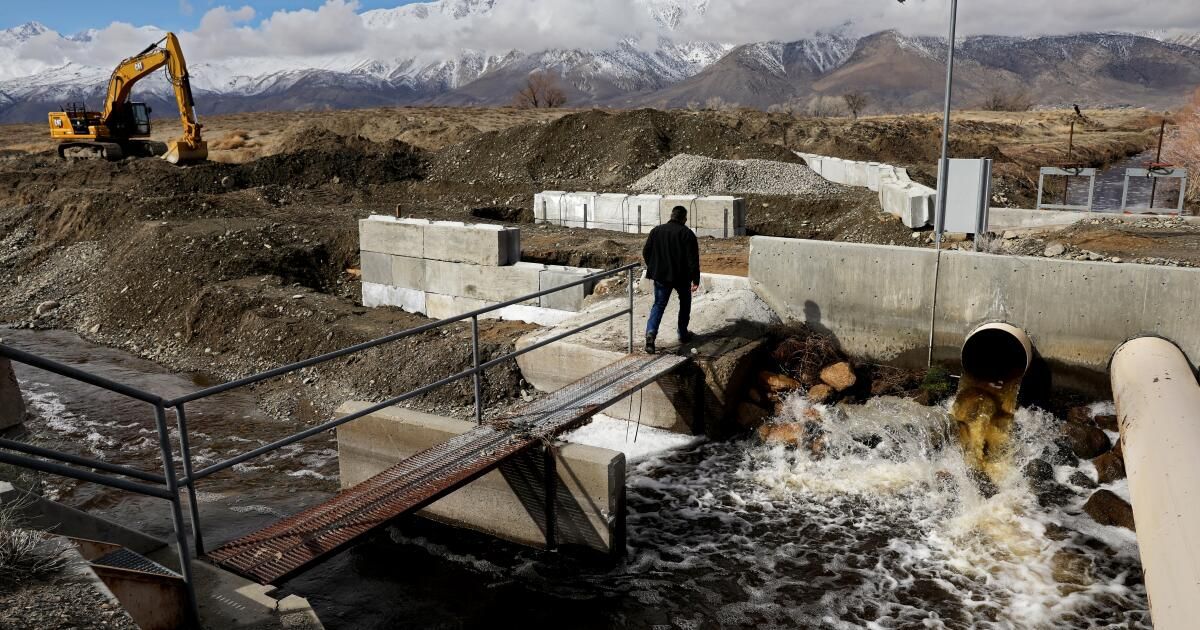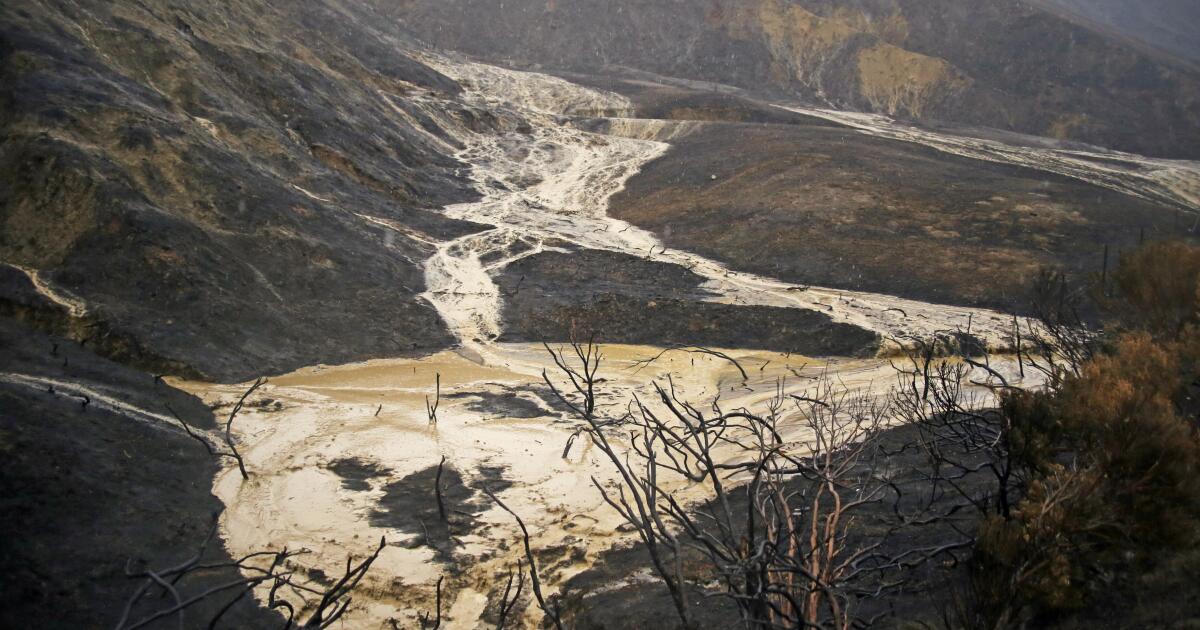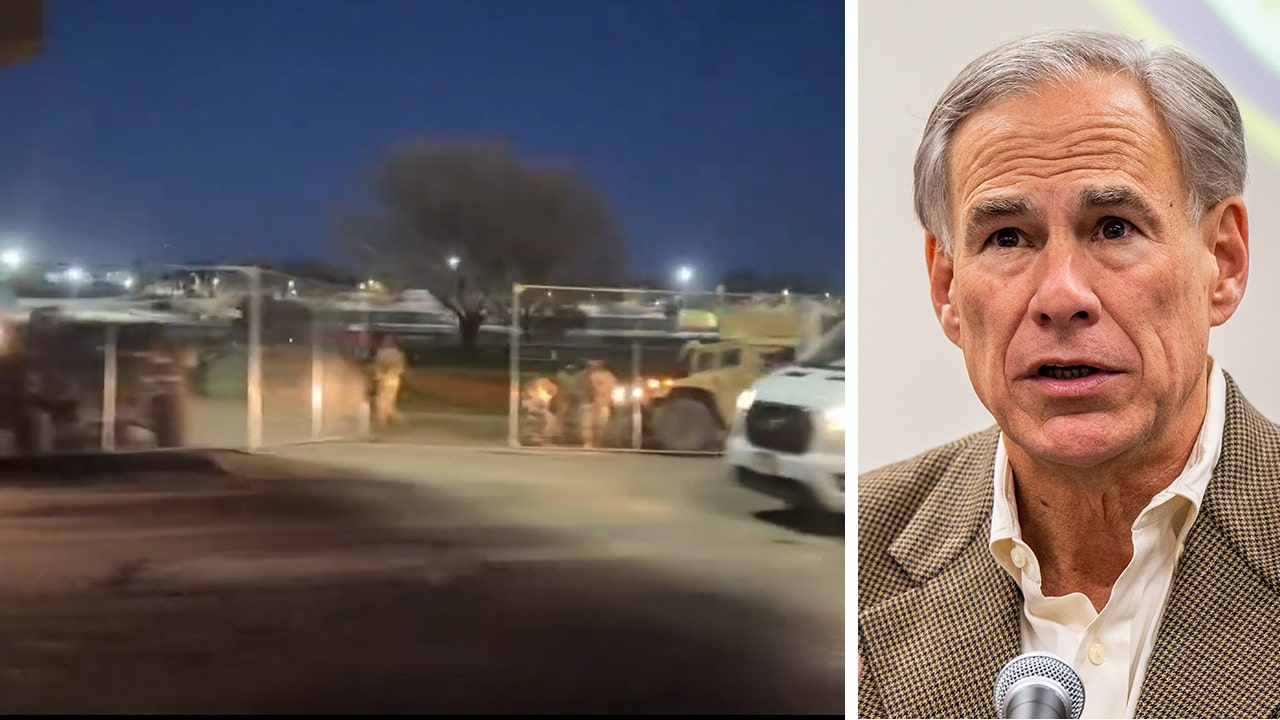Heavy rains and flooding over the past year have caused approximately $100 million in damage to Los Angeles Department of Water and Power infrastructure and dust control systems in the Owens Valley, according to officials, and that figure is expected to increase as Southern California suffers another atmospheric storm this week.
Although heavy storms have dumped abundant rain and snow across the southern Sierra Nevada, allowing Los Angeles to pump millions of gallons of water for its residents, the precipitation has also taken a heavy toll on systems designed to prevent choking dust storms to develop. the dry bed of Owens Lake.
“We are trying to build resiliency in our Owens Valley operations,” said Adam Perez, manager of the Los Angeles Aqueduct. “But large amounts of stormwater cause damage in a short time, and we are doing everything we can to fix it.”
A pond fills a portion of the dry Owens Lake bed.
(Brian van der Brug/Los Angeles Times)
Storm damage includes a major breach in the aqueduct that occurred in March of last year, damage inflicted by Tropical Storm Hilary in August, and the submergence of dust sensors and dust monitoring systems throughout the lakebed.

Aggressive and impactful reporting on climate change, the environment, health and science.
Although damage is still being estimated, a preliminary assessment estimated the costs will be more than $100 million, DWP officials said. The agency has not yet determined how much of that spending will be passed on to its 4 million taxpayers, about half of whom live in disadvantaged communities.
Owens Lake evaporated into a pool of brine surrounded by vast salt flats after its tributaries were diverted to Los Angeles in 1913. After the salt flats became a source of unhealthy dust pollution, the city that would control the problem.
The brine pool, which normally holds 5,000 acre-feet of water, has grown to about 50,000 acre-feet due to emergency water releases created by a series of unusually powerful storms that began early last year. This additional water has submerged and damaged extensive dust control measures.
“Pouring water into the brine pool is not something we do lightly, but our dams are full and the streams are still full, so it is something we have to do to meet Division of Dam Safety requirements.” from California,” Pérez said.
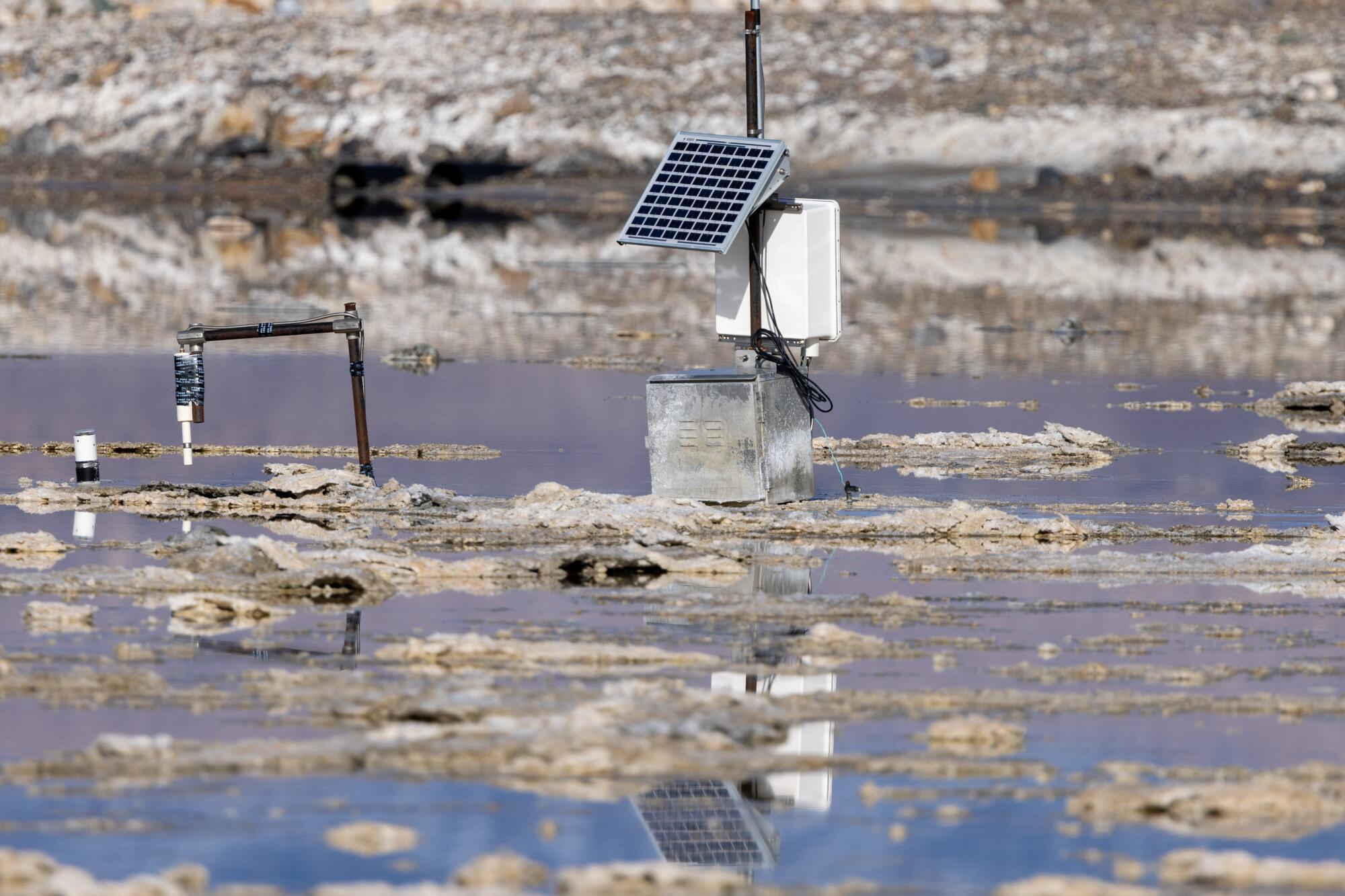
Recently, the Los Angeles Department of Water and Power's dust monitoring equipment rises due to flooding at Owens Lake.
(Brian van der Brug/Los Angeles Times)
A recent study by the National Academy of Sciences puts the region's increasingly erratic weather patterns in context, with worrying implications for the DWP: “Climate change is expected to negatively impact the Owens Valley water supply and therefore therefore, dust control efforts, with longer, more severe droughts and more extreme wet years.
“Due to climate-related changes,” he says, “water availability for dust mitigation will be more variable, more water will be needed during dry periods to mitigate dust and maintain habitat, and more pressure will be placed on the environment.” system to support downstream water demands.”
The DWP has spent $2.5 billion to combat the swirling clouds of fine dust kicked up by fearsome gusts of wind on the dry lake bed. By introducing vegetation, gravel, tillage and shallow flooding, the department has reduced air pollution by 99% and brought some peace to the rural valley where people have long held resentments toward Los Angeles.
Acrimony has simmered in Owens Valley since the early 1900s, when the city had agents posing as farmers and ranchers to buy land and water rights in the valley, then began building an aqueduct to collect and divert water from Owens County. Inyo to the metropolis eager for water. about 180 miles south.
Los Angeles diverted so much water through the aqueduct system that it became nearly impossible for local farmers and ranchers to make a living — a scandal dramatized in the classic 1974 film “Chinatown.”
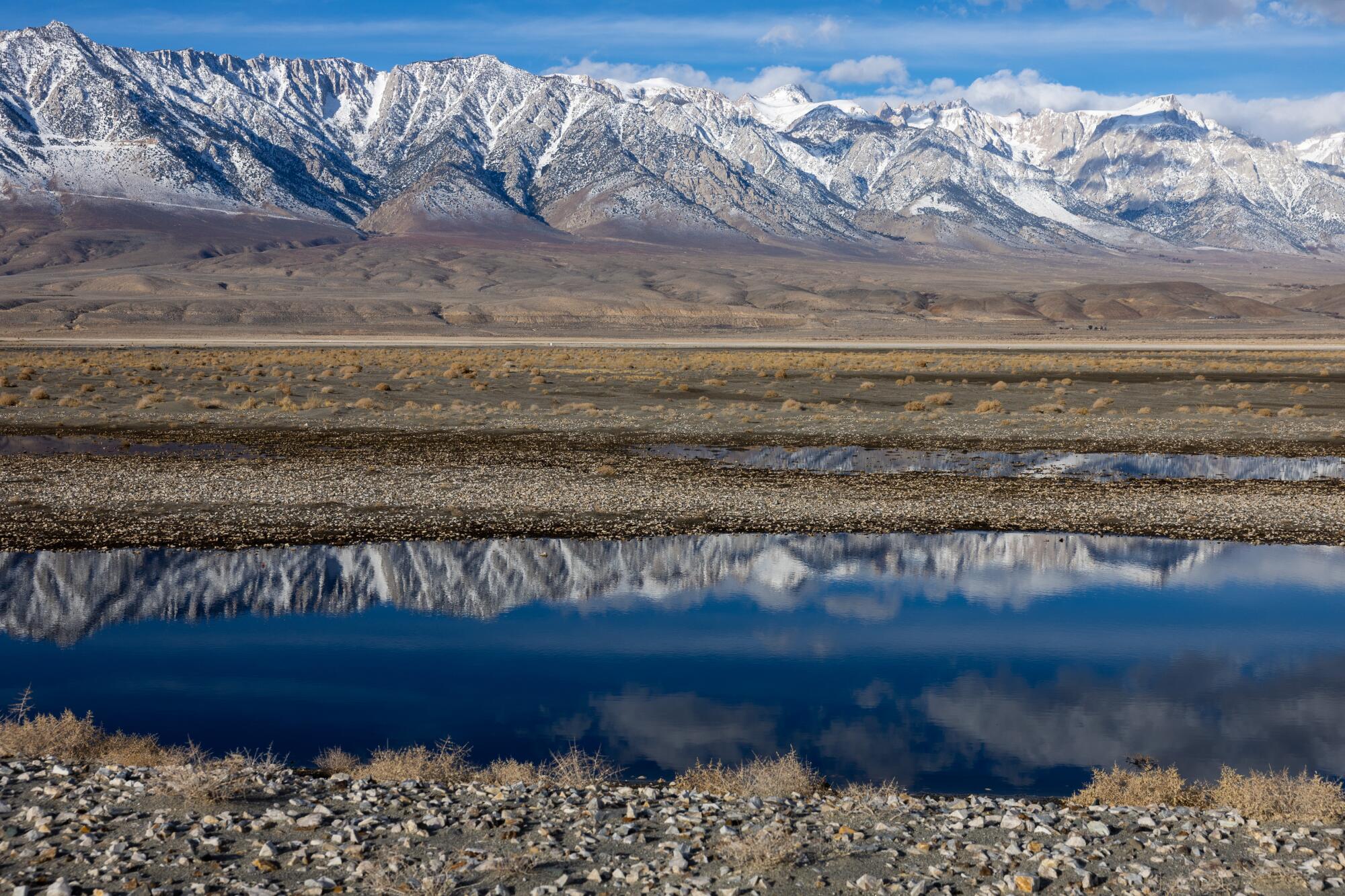
Heavy storms over the past year have filled large portions of the dry Owens Lake bed, causing damage to dust suppression and monitoring systems. The full extent of the damage may not be known until the water evaporates in about a year.
(Brian van der Brug/Los Angeles Times)
In March 2023, a series of atmospheric rivers severed the aqueduct, chewed up berms, flooded electrical equipment with hypersaline mud, and required the removal of approximately 300,000 cubic yards of debris and silt deposited on sprawling terrain by waters diverted from rivers, canals, and reservoirs. .
DWP recovery efforts included repairing roads, adding riprap to 14 miles of berm slopes, removing critical electrical equipment threatened by corrosive flood waters, and installing monitoring stations and cameras to track flooding in real time. More than 200 people working around the clock used 86 excavators and 54 dump trucks to deliver 200,000 tons of rock, bail out 300,000 cubic yards of sediment and deploy 15,000 sandbags.
Last year's record melt also meant managing 1 million acre-feet of water along the aqueduct, equivalent to filling about 493,617 Olympic-sized swimming pools, officials said.
1
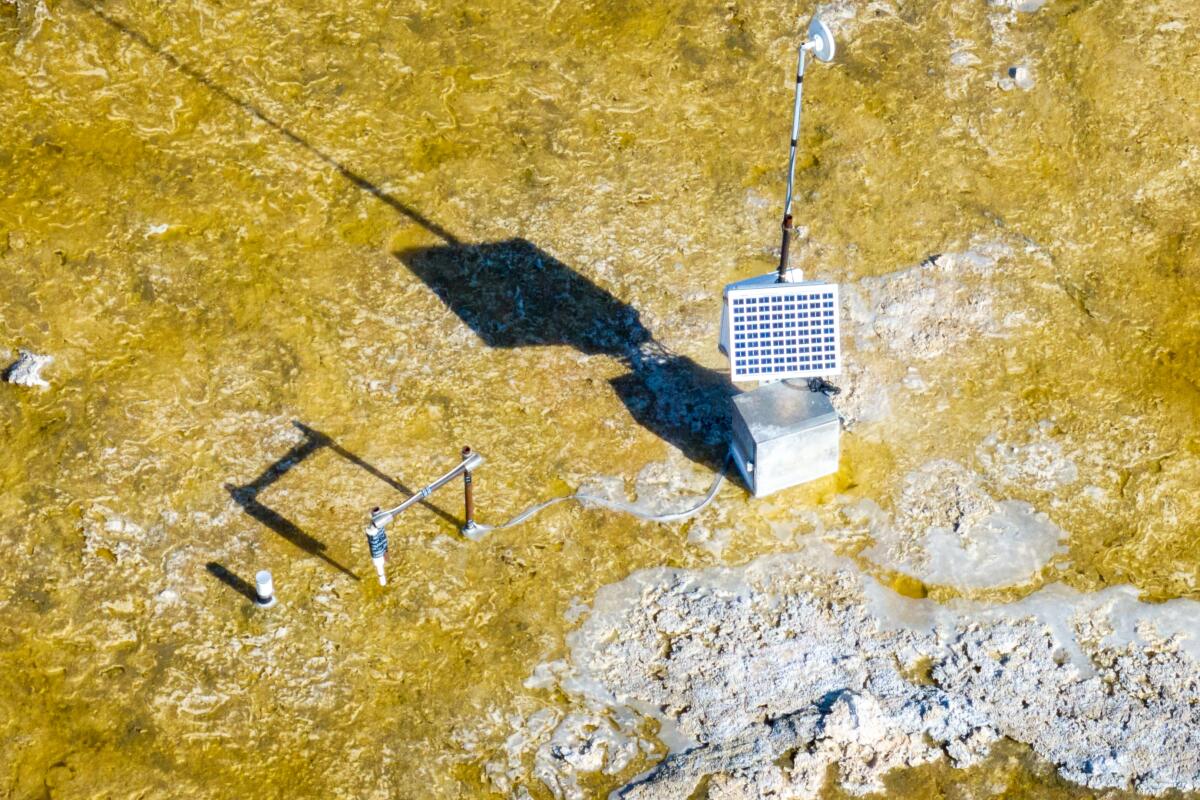
2
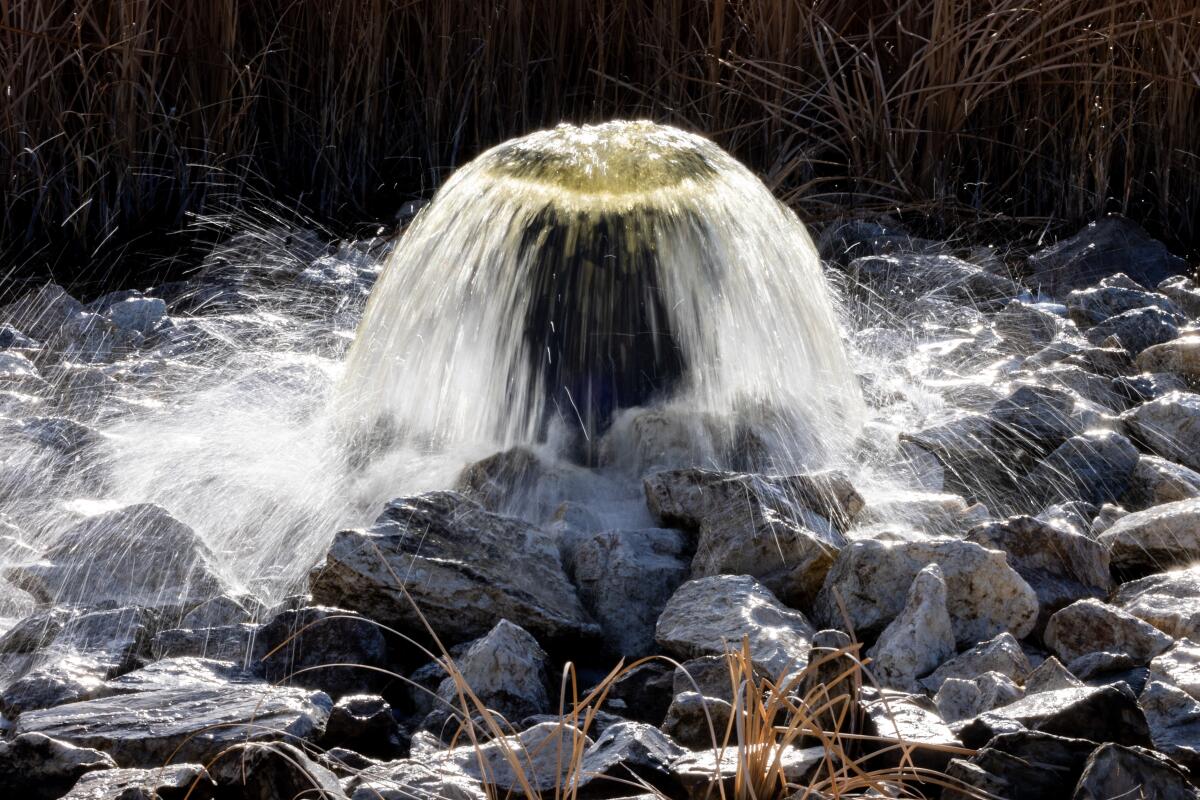
1. Monitoring equipment in a brine pool, part of the Owens Lake dust mitigation program on the dry lake bed. 2. Water flows through an aerator at Owens Lake on Wednesday, February 14, 2024 in Lone Pine, CA. (Brian van der Brug/Los Angeles Times)
Now, a century after the aqueduct tapped its inflows of snowmelt from the Owens River and Cottonwood Creek, those massive storms (and a parade of others that followed) have transformed much of the beach into a vividly unfamiliar inland sea surrounded by craggy escarpments. snowy peaks. Sawtooth peaks, rust-striped hills, and sharp-edged mounds of lava.
“This is the most water I've ever seen in Lake Owens,” said David Kruger, 79, a hiking consultant and Lone Pine resident. “I've been pointing out friends to some of the best places to take photos of this rare and impressive sight before it evaporates.”
Gwen Gardner, 96, was only joking when she said, “I'm surprised there aren't at least a few people canoeing that lake.”
This part of the Eastern Sierra is a rapidly changing landscape due to climate change and Los Angeles politics. “The brine pool evaporation rate is about 6 feet per year,” Perez said. “So most of it will be gone by late fall.”
The forecast for Owens Valley runoff in 2023-24 calls for 955,600 acre-feet of water, or 233% of normal, officials said. The DWP plans to export about 395,000 acre-feet of that water, and the rest will be used in Owens Valley for municipal and irrigation purposes, and to mitigate dust on the lake bed. One acre-foot of water is enough to supply two or three homes for a year.
The abundance of stormwater and snowmelt has spurred campaigns led by conservation groups, tribal leaders and air regulators to stop Los Angeles from diverting water from the eastern Sierra basin.
When Jaime López-Wolters, a desert lands organizer for the nonprofit Friends of the Inyo, wants to introduce people to the problem, he takes them to a cliff overlooking a serene landscape born of seismic upheavals, sudden storms and flows. of melted snow freezing Cottonwood Creek. had flowed into Owens Lake for thousands of years.
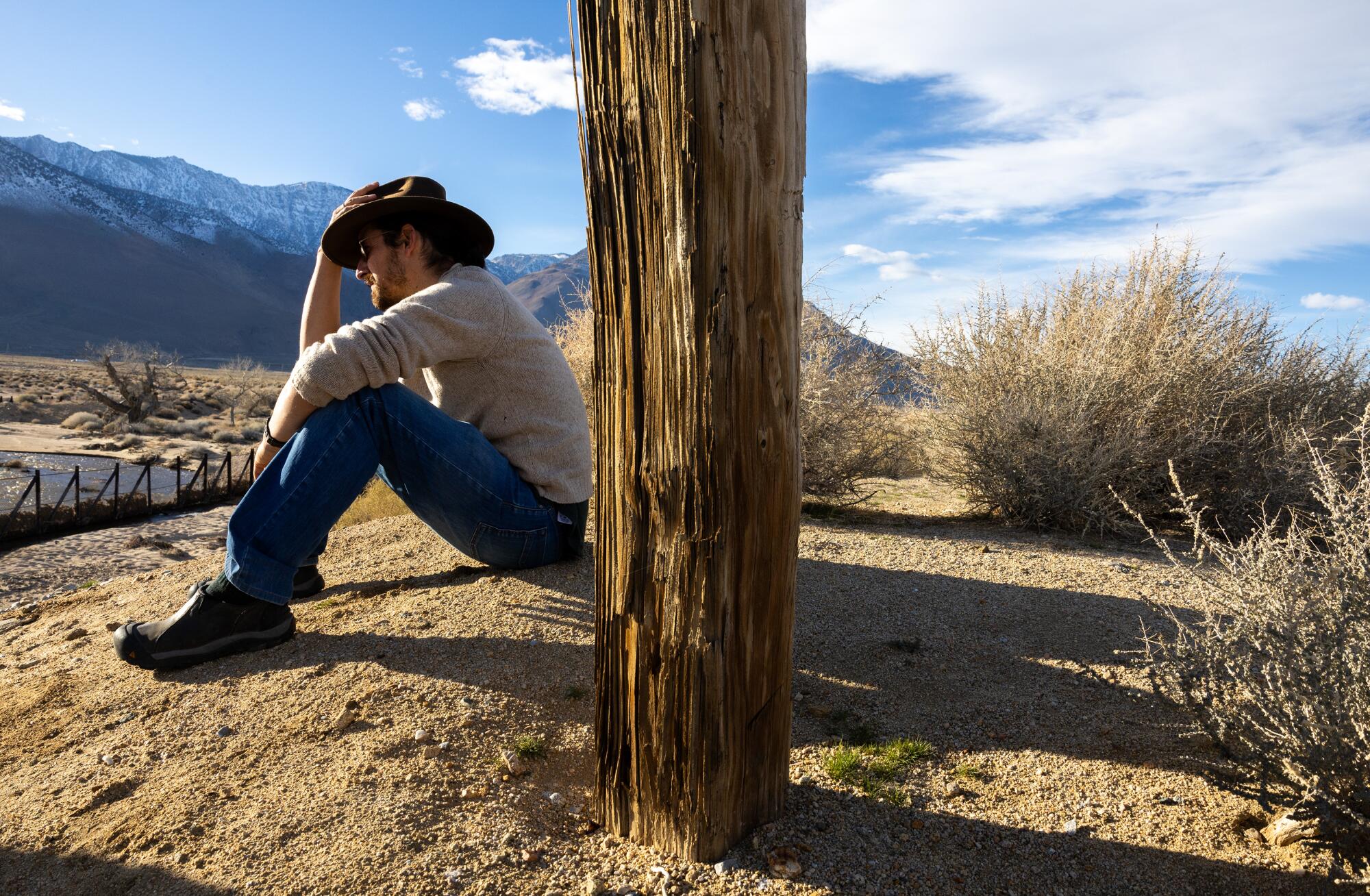
Jaime López-Wolters, a desert lands organizer for the nonprofit Friends of the Inyo, sits recently along Cottonwood Creek near Owens Lake.
(Brian van der Brug/Los Angeles Times)
“This stretch of the river is usually completely dry because its water is diverted into the aqueduct,” he said. “However, at this time DWP is using the riverbed as a release valve for stormwater in the system.”
“Our question for Los Angeles is this,” he added. “At what point does it become more expensive to continue pumping this water to Los Angeles than to leave it here to do the job it has been doing since time immemorial?”
Modifying the amount of water diverted to Los Angeles and allowing Lake Owens to refill and reach a stable state falls outside the DWP's charge, which is focused on balancing the costs of maintaining its aging aqueduct and dust control projects in between. of damaging winter storms with the financial burden. transferred to its taxpayers.

